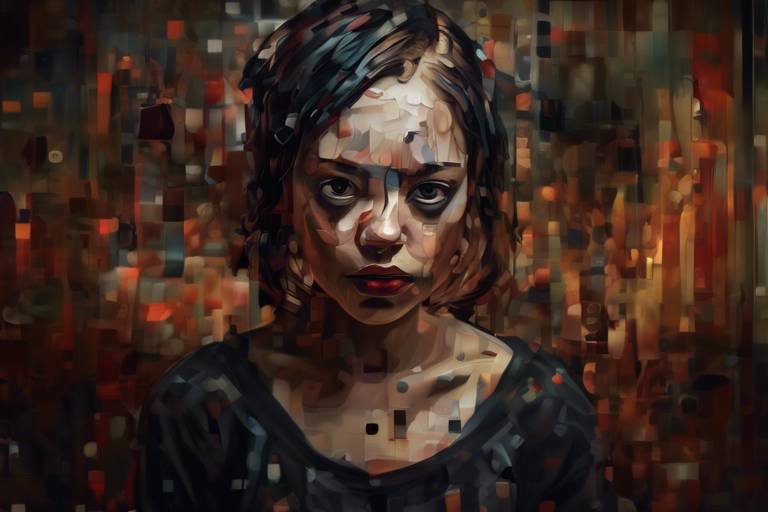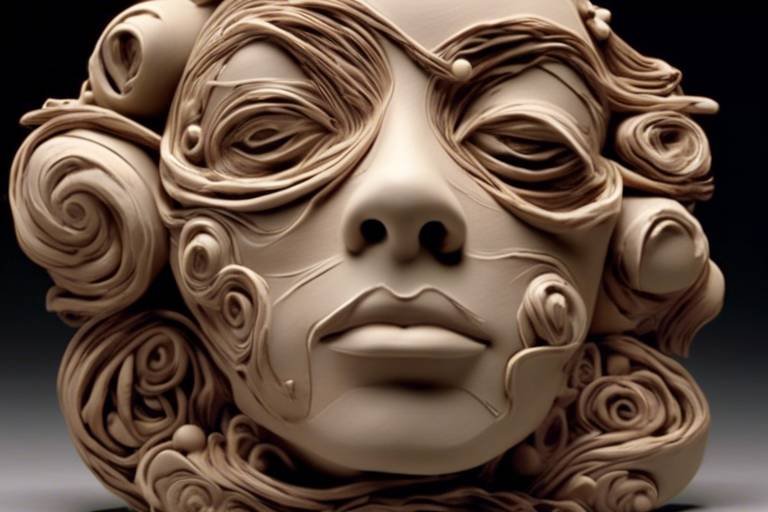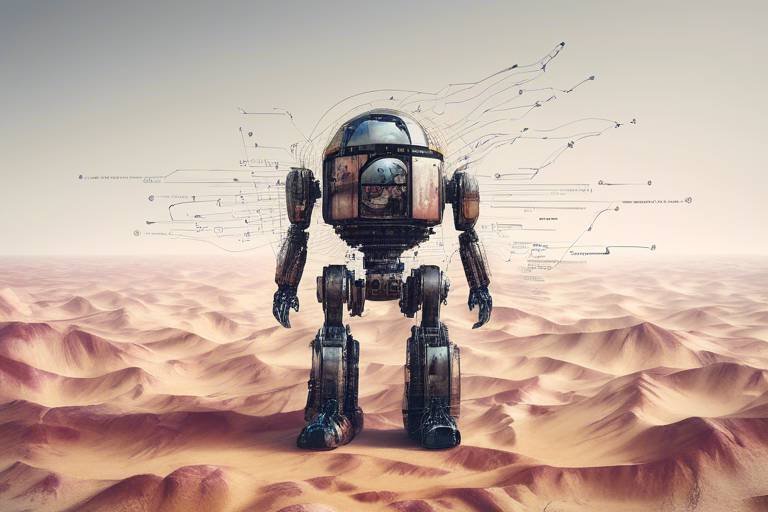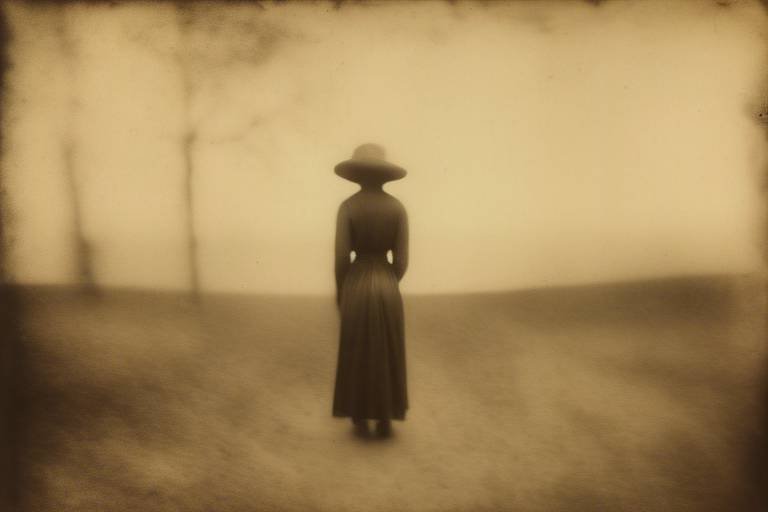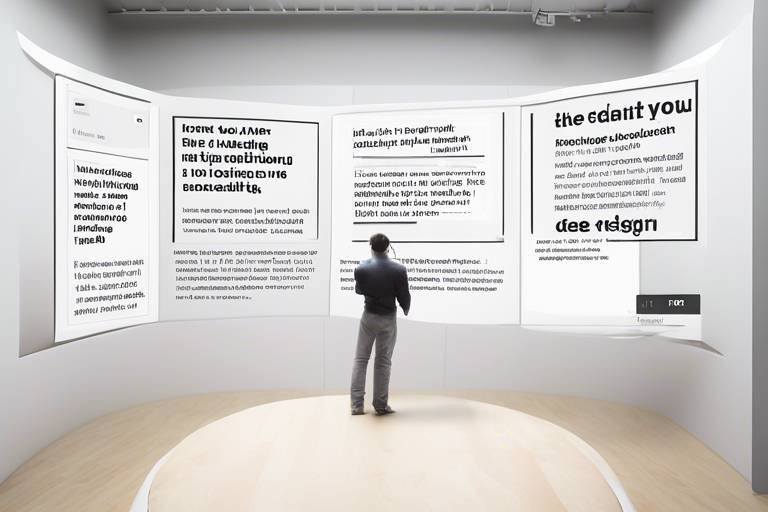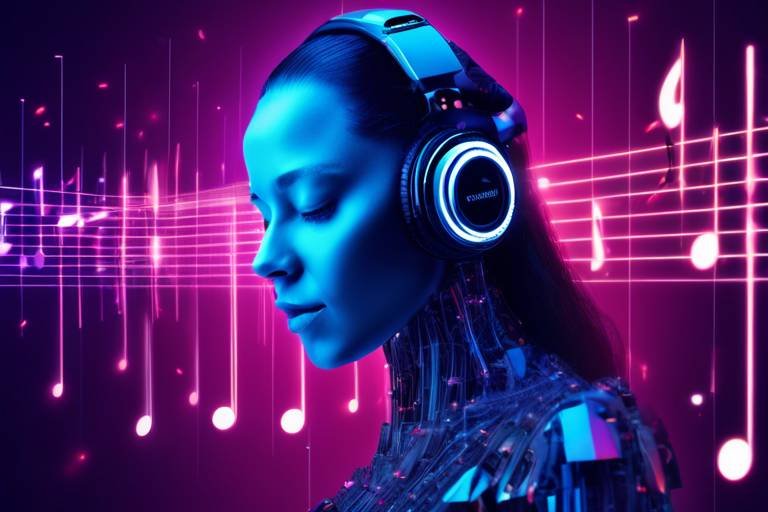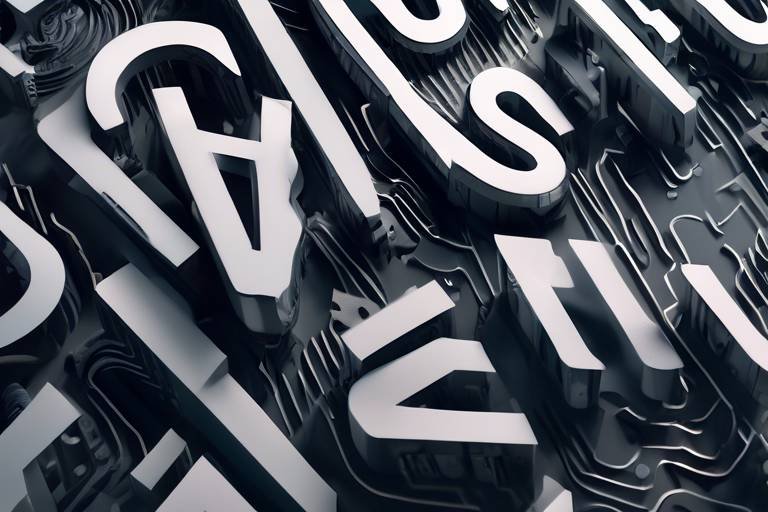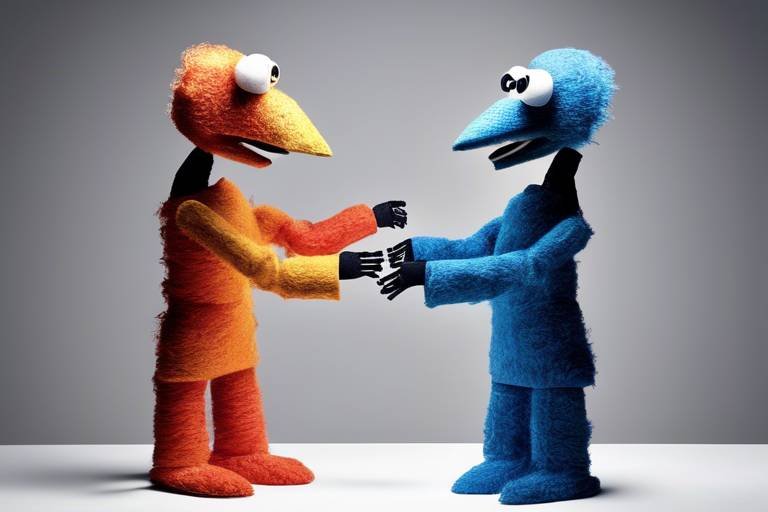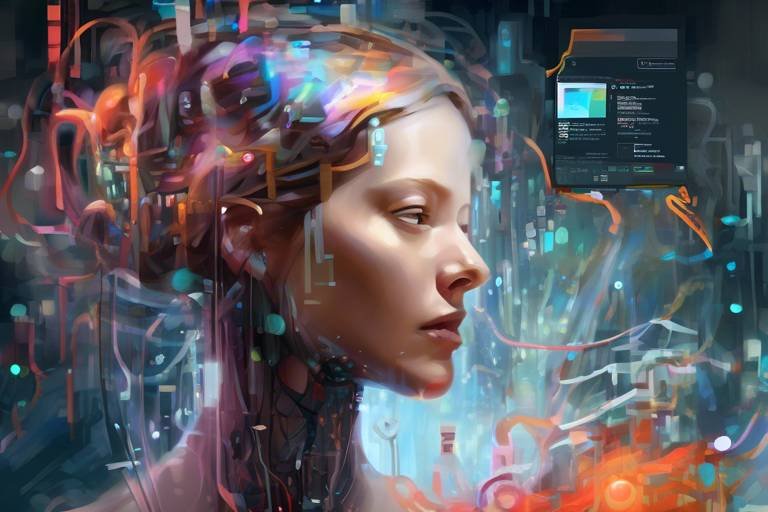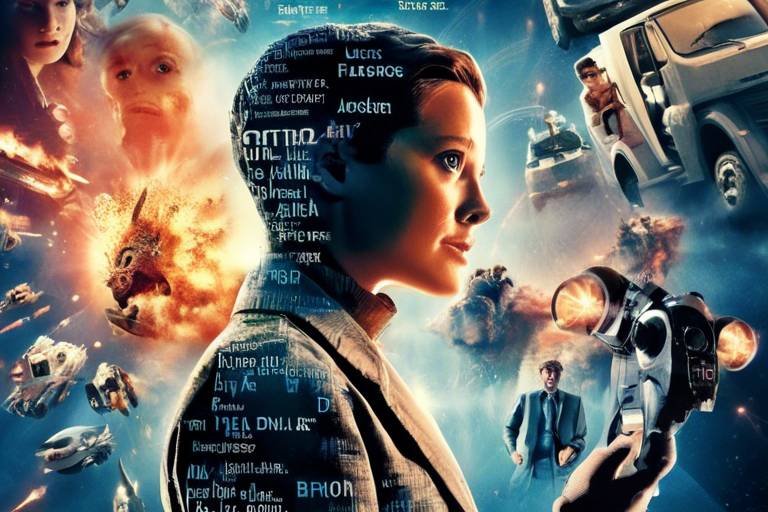AI's Interpretation of Realism Art
In recent years, the intersection of art and technology has become a hot topic, and one area that has garnered significant attention is how artificial intelligence (AI) interprets realism art. Realism, which emerged in the 19th century, is all about capturing the mundane and the everyday, portraying ordinary people and scenes with a sense of authenticity. But how does AI, a creation of algorithms and data, grasp the subtleties of this deeply human art form? This article will take you on a journey through the fascinating world of AI's interpretation of realism art, exploring its techniques, challenges, and the implications for the future of art criticism.
Imagine walking through an art gallery, surrounded by paintings that tell stories of everyday life, from bustling city streets to serene rural landscapes. Each brushstroke and color choice conveys emotions and narratives that resonate with viewers on a personal level. Now, picture an AI system attempting to analyze these artworks. Can it truly understand the emotional weight behind a piece, or is it merely processing pixels and patterns? This question lies at the heart of the exploration of AI in art interpretation.
As we delve deeper, we'll uncover the various methods AI employs to analyze realism art. From machine learning to neural networks, these technologies enable AI to dissect artworks in ways that were once unimaginable. But while AI can identify shapes, colors, and styles, it raises a critical question: can it replicate the human experience that informs artistic creation? The answer is complex and multifaceted, reflecting the layered nature of both art and technology.
In the upcoming sections, we will discuss how AI systems are trained and the challenges they face in interpreting the nuances of realism art. We will also explore the potential for collaboration between artists and AI, as well as the future of AI in the realm of art appreciation and criticism. As we embark on this exploration, it's essential to keep an open mind about the capabilities and limitations of AI in understanding the rich tapestry of human expression found in realism art.
- What is realism art? Realism art is an art movement that began in the 19th century, focusing on depicting everyday life and ordinary people with authenticity.
- How does AI analyze art? AI uses techniques such as machine learning and neural networks to analyze visual elements in artworks, including color, form, and style.
- Can AI truly understand art? While AI can process and analyze artworks, understanding the emotional and cultural context behind them remains a challenge.
- What are the benefits of AI in art criticism? AI can provide new insights and perspectives on artworks, helping to democratize art appreciation and make it more accessible.

The Essence of Realism in Art
Realism emerged as a significant art movement in the 19th century, fundamentally reshaping how artists approached their craft. Unlike its predecessors, which often romanticized or idealized subjects, realism sought to depict the world as it truly was. Imagine walking through a bustling marketplace, observing the genuine interactions of everyday people—this is the essence of realism. The movement focused on portraying ordinary life, highlighting the struggles and triumphs of common folk, rather than glorifying historical or mythological figures.
Historically, realism was a response to the dramatic and emotional styles of Romanticism. Artists like Gustave Courbet and Jean-François Millet were at the forefront of this movement, using their brushes to capture the raw, unfiltered essence of their subjects. They painted scenes that resonated with the everyday experiences of their viewers, often drawing inspiration from their own lives and surroundings. For instance, Courbet’s famous work, The Stone Breakers, starkly portrays laborers engaged in hard physical work, emphasizing the dignity of their toil.
Defining characteristics of realism include:
- Attention to Detail: Realist artists meticulously studied their subjects, ensuring that every wrinkle and shadow was accurately represented.
- Everyday Life: The subjects of realism were often ordinary people engaged in mundane activities, reflecting the reality of life.
- Social Commentary: Many realist works contained subtle critiques of society, addressing issues such as poverty, labor rights, and class struggles.
This artistic movement not only transformed visual arts but also influenced literature and theater, creating a ripple effect that emphasized authenticity and relatability across all forms of artistic expression. As we delve deeper into the realm of realism, it’s essential to recognize how this movement laid the groundwork for future art styles, including modernism and contemporary art.
In essence, realism was more than just an artistic style; it was a philosophical shift. It challenged artists to confront the world around them with honesty, urging them to reflect real-life experiences rather than merely creating beautiful images. This commitment to authenticity resonates even today, influencing how we perceive and appreciate art in a rapidly evolving world.

AI Techniques in Art Analysis
Artificial intelligence has revolutionized many fields, and art analysis is no exception. By employing sophisticated techniques, AI can delve into the depths of realism art, offering insights that were previously unimaginable. But how exactly does AI interpret these masterpieces? Let's break it down!
One of the primary techniques used in AI art analysis is machine learning. This involves training algorithms on vast datasets of artwork, allowing them to recognize patterns, styles, and elements characteristic of realism. For instance, a machine learning model can be trained to identify the brush strokes of famous realism artists like Gustave Courbet or Jean-François Millet, understanding the nuances that differentiate their works from others. This process is akin to teaching a child to recognize different animals by showing them countless pictures until they can identify them on their own.
Another critical aspect of AI art analysis is the use of neural networks. These networks mimic the human brain's functioning, enabling AI systems to process complex visual information. When analyzing realism art, neural networks can break down an image into its fundamental components—such as color, texture, and composition—allowing for a deeper understanding of the artwork's essence. This is similar to how we might dissect a recipe to understand how each ingredient contributes to the final dish.
To effectively analyze realism art, AI systems require extensive data. This means gathering a diverse range of artworks, including paintings, sketches, and even photographs that embody the realism movement. The quality of this data is crucial; the more comprehensive and varied the dataset, the better the AI can learn and adapt. Think of it as feeding a plant—if you only give it one type of soil, it won't thrive as well as if you provide a rich mixture of nutrients.
Once the data is collected, the training phase begins. This involves using algorithms that can learn from the data, adjusting their parameters to improve accuracy. During this stage, AI systems are tested repeatedly, fine-tuning their ability to recognize and interpret the subtleties of realism art. It's a bit like preparing for a big exam—studying different subjects, practicing past papers, and refining your understanding until you're ready to tackle any question that comes your way.
At the heart of AI's understanding of visual art are image recognition algorithms. These algorithms help AI systems identify various elements within realism artworks, such as subjects, objects, and even the emotional tone conveyed through color and composition. For example, an algorithm might analyze a painting of a rural scene and recognize elements like farmers, fields, and animals, understanding how these components work together to tell a story.
Through this process, image recognition algorithms can also categorize artworks based on their themes and subjects, providing valuable insights into the cultural and historical context of the pieces. This analysis can reveal how realism art reflects societal values and everyday life during its time, making it a powerful tool for art historians and critics alike.
One of the most fascinating capabilities of AI is its ability to replicate artistic styles through style transfer techniques. This process allows AI to take the stylistic elements of realism artists and apply them to new images, creating fresh works that echo the aesthetic qualities of the originals. Imagine a modern photograph transformed into a stunning painting that resembles the works of Édouard Manet or Camille Corot—the result can be both breathtaking and thought-provoking.
Style transfer not only showcases AI's creative potential but also raises intriguing questions about authorship and originality in art. If a machine can create a piece that feels authentically realistic, what does that mean for our understanding of artistic expression? This ongoing dialogue between technology and creativity is reshaping our perception of art in the digital age.
In summary, AI's techniques in art analysis, from machine learning to style transfer, are pushing the boundaries of how we interpret realism art. As we continue to explore these technologies, the future of art criticism and appreciation looks promising, opening up new avenues for understanding and enjoying the masterpieces of the past.
- What is realism art? Realism art is a movement that emerged in the 19th century, focusing on depicting everyday life and ordinary people without idealization.
- How does AI analyze art? AI uses techniques like machine learning and neural networks to identify patterns and elements in artworks, allowing for deeper interpretation.
- Can AI create realistic art? Yes, through style transfer techniques, AI can replicate the styles of realism artists, creating new works that mimic their aesthetic qualities.
- What are the limitations of AI in art analysis? AI may struggle with understanding the emotional and cultural nuances of art, as it lacks human experience and intuition.

Data Collection and Training
To effectively analyze realism art, artificial intelligence systems rely heavily on a robust foundation of data collection and training. Think of it like teaching a child to recognize different animals; you wouldn't just show them a cat once and expect them to identify all cats in the future. Similarly, AI requires a vast array of images, styles, and contexts to understand the nuances of realism art.
The process begins with data collection, where thousands, if not millions, of images from various realism artists are gathered. This includes famous works from the likes of Gustave Courbet and Édouard Manet, as well as lesser-known pieces. The goal is to provide a comprehensive dataset that covers a wide range of subjects, techniques, and historical contexts. The more diverse the dataset, the better equipped the AI will be to recognize patterns and styles.
Once the data is collected, it undergoes a rigorous training process. During this stage, machine learning algorithms analyze the images to identify key features such as color palettes, brush strokes, and compositional elements. This is akin to how a student might study for an exam, going over notes and practicing problems until they grasp the material. The AI 'learns' by adjusting its algorithms based on the feedback it receives, refining its ability to interpret and replicate the essence of realism art.
To illustrate this process, consider the following table that outlines the stages of data collection and training:
| Stage | Description |
|---|---|
| Data Collection | Gathering a diverse range of realism art images from various sources. |
| Data Preprocessing | Cleaning and organizing the dataset to ensure quality and consistency. |
| Model Training | Using machine learning algorithms to analyze and learn from the dataset. |
| Testing & Validation | Evaluating the AI's performance and adjusting parameters for accuracy. |
Moreover, it's essential to note that the quality of data significantly impacts the AI's ability to interpret art. If the dataset is skewed or lacks diversity, the AI might develop a narrow understanding, leading to misinterpretations. For instance, if the training data predominantly features works from a single artist, the AI might struggle to recognize the unique qualities of other realism artists.
In summary, the data collection and training process is a foundational aspect of how AI interprets realism art. By amassing a diverse dataset and employing sophisticated algorithms, AI systems can begin to understand the intricate details that make realism art so captivating. As technology advances, the potential for AI to provide deeper insights into art appreciation continues to grow, paving the way for exciting developments in the field.

Image Recognition Algorithms
When we think about how artificial intelligence interprets realism art, one of the most fascinating aspects is the use of . These algorithms are like the eyes of AI, allowing it to see and understand the visual elements present in artworks. Imagine trying to decipher a complex painting without being able to see it; that’s where these algorithms come into play. They analyze the shapes, colors, and patterns in the images, breaking them down into data points that can be processed and understood.
At the heart of image recognition lies the concept of feature extraction. This involves identifying key features in an image, such as lines, textures, and colors. For realism art, which often emphasizes detail and lifelike representation, these features are crucial. The algorithms learn from vast datasets of labeled images, understanding what makes a painting look realistic versus abstract. This training process is akin to teaching a child to recognize different animals by showing them numerous pictures until they can identify a cat or a dog independently.
To illustrate how these algorithms work, let’s consider a simplified example. Imagine an AI program tasked with analyzing a painting of a bustling street scene. The image recognition algorithm would:
- Detect Objects: Identify people, buildings, trees, and vehicles within the scene.
- Analyze Colors: Break down the color palette used by the artist, noting shades and tones that contribute to the overall mood.
- Recognize Patterns: Understand recurring motifs or styles that define the realism movement, such as perspective and depth.
Through this multi-step process, AI gains a deeper understanding of realism art. However, it’s important to note that while these algorithms are powerful, they are not infallible. They can struggle with context and emotion, often missing the subtleties that a human critic might appreciate. For instance, a human observer might feel a sense of nostalgia or melancholy when viewing a particular piece, emotions that are challenging for AI to quantify and interpret.
As we move forward, the synergy between AI and image recognition algorithms will continue to evolve. These tools not only assist in the analysis of existing artworks but also pave the way for innovative creations. Artists can leverage these algorithms to gain insights into their own work, enhancing their creative process. The future of art interpretation may well lie in the collaboration between human intuition and AI's analytical prowess.
- What are image recognition algorithms? These are computational methods that allow AI to identify and classify objects within images, crucial for analyzing artworks.
- How does AI interpret realism art? AI uses image recognition to analyze the details, colors, and compositions in realism art, although it may miss emotional nuances.
- Can AI create art in the realism style? Yes, through techniques like style transfer, AI can mimic the aesthetics of realism artists, creating new works that reflect their style.

Style Transfer and Replication
Style transfer is one of the most fascinating applications of artificial intelligence in the realm of art. Essentially, it's a technique that allows AI to take the stylistic elements of one artwork and apply them to another, creating a unique blend that retains the essence of both. Imagine a world where Van Gogh's swirling skies dance across a canvas depicting a modern cityscape—that's the magic of style transfer!
At its core, style transfer involves neural networks, particularly convolutional neural networks (CNNs), which are designed to analyze and interpret visual data. These networks learn to differentiate between the content of an image (the actual objects and scenes depicted) and its style (the colors, brushstrokes, and textures). The process can be broken down into several key steps:
- Content Extraction: The AI first identifies the main elements of the image it wants to transform, focusing on the shapes and structures.
- Style Analysis: Next, the AI examines a source artwork to extract its stylistic features, such as color palettes and brushstroke patterns.
- Combination: Finally, the AI merges the content from the first image with the style from the second, generating a new artwork that reflects both.
This technique has opened up exciting avenues for artists, allowing them to explore new creative possibilities. For instance, an artist might use AI to create a piece that replicates the style of a renowned realism artist, such as Gustave Courbet, while incorporating their own modern themes and subjects. The result is a stunning fusion that pays homage to the past while pushing the boundaries of contemporary art.
However, it's important to note that while AI can replicate the aesthetic qualities of realism art, it does not possess the emotional depth or historical context that human artists bring to their work. The nuances of human experience, the stories behind the brushstrokes, and the cultural significance of a piece cannot be fully captured by algorithms. This raises intriguing questions about authenticity and authorship in the age of AI. Who is the true creator of an artwork generated through style transfer? Is it the artist, the AI, or perhaps a collaboration between the two?
As we delve deeper into the realm of AI and art, we must consider the implications of these technologies on the future of artistic expression. While AI can replicate styles, it also challenges us to rethink our definitions of creativity and originality. Will we embrace AI as a tool that enhances our artistic endeavors, or will we resist its influence, holding on to the belief that true art can only come from the human experience?
- What is style transfer in AI? Style transfer is a technique that allows AI to apply the stylistic elements of one artwork to another, creating a new piece that combines both content and style.
- Can AI create original art? While AI can generate unique artworks, it primarily relies on existing styles and patterns. The emotional depth and intent behind human-created art are still unmatched.
- How do artists use AI in their work? Artists use AI tools to explore new ideas, replicate styles, and enhance their creative processes, often blending traditional techniques with modern technology.
- What are the ethical implications of AI in art? The rise of AI in art raises questions about authenticity, authorship, and the value of human creativity versus machine-generated works.

Challenges in AI Interpretation
As we dive deeper into the fascinating world of artificial intelligence and its interpretation of realism art, we must acknowledge that this journey is not without its challenges. While AI has made significant strides in analyzing and understanding various forms of art, interpreting realism poses unique hurdles that can leave even the most advanced algorithms scratching their digital heads. One of the primary challenges is the nuanced understanding of context. Realism art often captures the subtleties of human emotions, social conditions, and cultural backgrounds, which can be incredibly complex for AI to grasp. Unlike humans, who can draw upon personal experiences and emotional intelligence, AI relies solely on data, which may lack the depth needed to interpret these intricate layers.
Another significant challenge is the subjectivity of art interpretation. Art is inherently subjective, and what resonates with one person may not resonate with another. AI systems, built on algorithms and patterns, may struggle to account for personal tastes or cultural influences that shape individual perceptions of realism. For instance, two viewers might see the same painting and walk away with completely different interpretations based on their backgrounds and experiences. This variability raises questions about the reliability of AI in delivering a universally accepted interpretation of art.
Moreover, there is the challenge of data limitations. While AI requires extensive datasets to learn and improve, the available data on realism art may not be comprehensive enough. Often, artworks are not just visual representations; they carry historical significance and personal narratives that are difficult to quantify. If the training data lacks diversity or depth, the AI's analysis can become skewed, leading to misinterpretations or oversimplifications of complex artworks. For example, if an AI model is trained predominantly on a specific genre of realism, it may not effectively interpret works from different cultural perspectives or historical contexts.
Furthermore, the technical limitations of AI also play a role. Image recognition algorithms have made great strides, yet they still struggle with certain aspects of visual art. For instance, the subtleties of texture, color gradients, and the emotional weight of a brushstroke can be challenging for AI to quantify. This lack of understanding can lead to a superficial analysis that misses the essence of what makes realism art so impactful.
In summary, while AI holds great promise in the realm of art interpretation, the challenges it faces in understanding realism are multifaceted. From the nuanced context of artworks to the subjectivity of interpretation, data limitations, and technical hurdles, these factors highlight the complexity of merging technology with human creativity. As we continue to explore the intersection of AI and art, it’s crucial to remain aware of these challenges and strive for a deeper understanding that respects the richness of realism art.
- What is the main challenge AI faces when interpreting realism art?
AI struggles with the nuanced understanding of context and the subjectivity inherent in art interpretation. - Can AI fully replace human art critics?
While AI can assist in art analysis, it cannot fully replace the emotional intelligence and personal experiences that human critics bring to the table. - How does data limitation affect AI's interpretation of realism?
A lack of comprehensive and diverse datasets can lead to skewed interpretations and an inability to grasp the full depth of realism art.

The Impact of AI on Art Criticism
As we step into a new era of technological advancements, the realm of art criticism is undergoing a **remarkable transformation** thanks to artificial intelligence. Traditionally, art criticism has been a domain dominated by human experts who bring their unique perspectives and emotional insights to the table. However, with the advent of AI, we are witnessing a shift that raises intriguing questions: Can machines truly understand the **depth** and **nuance** of art? What does this mean for the future of art evaluation and appreciation?
AI is not just a tool for analysis; it is becoming a **partner** in the art criticism process. By employing advanced algorithms and machine learning techniques, AI can analyze vast amounts of data, including historical context, artistic styles, and even the emotional responses of viewers. This capability allows AI to identify **patterns** and trends that may go unnoticed by human critics. For instance, AI can assess how certain colors or compositions resonate with audiences over time, providing insights that can lead to a **deeper understanding** of artistic movements.
Moreover, AI's ability to process and analyze data at lightning speed means that it can generate **objective critiques** based on quantifiable metrics. This is a game-changer in a field often criticized for its subjective nature. Imagine an AI system that evaluates a painting not just on its aesthetic appeal but also on its historical significance, cultural relevance, and even the emotions it evokes in viewers. This multidimensional approach can enrich our understanding of art and offer fresh perspectives.
However, the integration of AI into art criticism is not without its challenges. Critics argue that while AI can analyze data, it lacks the **emotional intelligence** and **cultural context** that human critics bring. Can a machine truly appreciate the **soul** of a painting or the **struggles** of an artist? The answer remains complex. While AI can provide valuable insights, it may never fully replace the human touch that has characterized art criticism for centuries.
As we navigate this uncharted territory, it’s essential to consider the implications of AI in art criticism. Will we see a future where human critics collaborate with AI to create a more comprehensive evaluation of art? Perhaps we’ll witness a new breed of critics who blend their expertise with AI-generated insights, resulting in a richer dialogue about art. The potential for collaboration is exciting, and it opens the door to innovative ways of thinking about art.
To illustrate the impact of AI on art criticism, consider the following table that highlights the **key differences** between traditional art criticism and AI-assisted criticism:
| Aspect | Traditional Art Criticism | AI-Assisted Art Criticism |
|---|---|---|
| Analysis Style | Subjective and personal | Objective and data-driven |
| Data Processing | Limited by human capacity | Rapid and extensive |
| Emotional Insight | Deep emotional connection | Lacks emotional context |
| Collaboration | Individual expertise | Potential for hybrid models |
In conclusion, the impact of AI on art criticism is profound and multifaceted. While it presents exciting opportunities for deeper analysis and fresh perspectives, it also challenges us to rethink the very essence of what it means to critique art. As we continue to explore this intersection of technology and creativity, one thing is clear: the future of art criticism will be a **dynamic blend** of human intuition and artificial intelligence.
- Can AI replace human art critics? While AI can provide valuable insights and analysis, it lacks the emotional depth and cultural context that human critics offer.
- How does AI analyze art? AI uses machine learning, data analysis, and image recognition algorithms to evaluate various aspects of artworks.
- What are the benefits of AI in art criticism? AI can process large amounts of data quickly, identify patterns, and provide objective evaluations, enhancing our understanding of art.
- Will AI change the way we appreciate art? Yes, AI has the potential to introduce new perspectives and facilitate a deeper dialogue about art, but it will not replace the human experience of appreciation.

Collaboration Between AI and Artists
The collaboration between artificial intelligence and artists is not just a trend; it's a revolutionary shift in the creative landscape. Imagine a world where artists can partner with advanced algorithms to push the boundaries of their imagination. This partnership is akin to having a co-pilot in a creative journey, where AI serves as a tool that enhances the artist's vision rather than replacing it. Artists are increasingly discovering that AI can help them explore new ideas, streamline their creative processes, and even challenge their own artistic norms.
One of the most exciting aspects of this collaboration is the way AI can generate new concepts and styles. For instance, artists can input their existing works into AI systems that analyze their unique styles and suggest variations or new compositions. This process can be compared to having a brainstorming buddy who never runs out of ideas. By leveraging machine learning algorithms, artists can uncover hidden patterns in their work and experiment with combinations they might not have considered on their own.
Moreover, AI tools like style transfer algorithms allow artists to blend their styles with those of historical figures or other contemporary artists. Imagine transforming a photograph into a painting that mimics the brush strokes of Van Gogh or the color palette of Monet! This not only opens up a new realm of possibilities for artistic expression but also invites dialogue about the nature of creativity itself. Is the AI merely a tool, or does it contribute to the creative process? This question leads us to ponder the essence of artistry in the age of technology.
However, it's essential to recognize that this collaboration is not without its challenges. Artists must navigate the complexities of integrating AI into their workflows while maintaining their creative integrity. There might be concerns about originality and authorship when AI-generated works become part of the art world. To address these challenges, many artists are embracing a mindset of exploration and experimentation, viewing AI not as a competitor but as a collaborator that can enrich their artistic journey.
In practical terms, many artists have begun to incorporate AI into their studios. They utilize tools that analyze their past works, predict trends, or even assist in the technical aspects of creation, such as color matching or composition balancing. This integration can be seen in various forms, from digital paintings to interactive installations that respond to viewer engagement. The result is a dynamic interplay between human creativity and machine learning that is reshaping the art world.
As we look to the future, the potential for collaboration between AI and artists seems limitless. With ongoing advancements in technology, we can expect to see even more innovative tools that will empower artists to explore uncharted territories. The fusion of art and AI could lead to entirely new genres and styles, redefining what we consider art in the 21st century.
- How does AI collaborate with artists?
AI collaborates with artists by providing tools that enhance creativity, such as generating new ideas, suggesting styles, and assisting in technical aspects of artwork creation. - Can AI create original art?
While AI can generate art based on learned patterns and styles, the question of originality is complex, as it often relies on existing works for inspiration. - What are the ethical implications of AI in art?
The ethical implications include concerns about authorship, originality, and the potential for AI to replace human creativity, which artists must navigate carefully. - Is AI a tool or a collaborator in the artistic process?
AI is primarily viewed as a tool that can enhance the creative process, but its role is evolving, leading to discussions about its contribution to art.

The Future of AI in Art
As we gaze into the horizon of art and technology, the future of AI in art appears both thrilling and uncertain. Imagine a world where artists and artificial intelligence work hand-in-hand, creating masterpieces that were once thought to be the sole domain of human creativity. The synergy between human emotion and machine precision opens up a myriad of possibilities that could redefine our understanding of art itself.
One of the most exciting prospects is the potential for AI to personalize art experiences. Picture this: an AI system that learns your preferences, styles, and emotional responses to various artworks, curating a collection that resonates deeply with you. This could transform the way we experience art in galleries and museums, making it more interactive and engaging. Instead of merely observing, we could find ourselves immersed in a tailored artistic journey that speaks to our individual tastes.
Moreover, as AI continues to evolve, we might witness the emergence of entirely new genres of art that blend human creativity with machine learning. For instance, artists could collaborate with AI to explore uncharted territories of digital realism or even create art that adapts in real-time to the viewer's reactions. This dynamic interaction could lead to a form of art that is not just created but experienced, where the canvas is alive and responsive.
However, with great power comes great responsibility. The integration of AI in art raises significant questions about authorship and originality. If an AI creates a piece of art, who owns it? The programmer, the artist who provided the input, or the AI itself? These questions will need to be addressed as we navigate this new landscape. In fact, ethics in AI art creation will become a crucial topic of discussion, prompting debates around copyright, authenticity, and the very definition of creativity.
Furthermore, the art market could see a dramatic shift as AI-generated artworks gain popularity. We may find ourselves at an intersection where traditional art forms coexist with AI creations, leading to a diverse marketplace that caters to a wide range of tastes and preferences. Auction houses might start featuring AI art, and collectors could invest in pieces that are not only visually stunning but also embedded with complex algorithms that enhance their value over time.
Ultimately, the future of AI in art is not just about technology; it's about the human experience. As we embrace these innovations, we must remember that art has always been a reflection of our society, culture, and emotions. AI can enhance this dialogue, providing us with new tools to express ourselves and connect with others. As we stand on the brink of this new era, the question remains: how will we shape this future? Will we allow AI to overshadow human creativity, or will we harness its potential to elevate our artistic endeavors?
As we ponder these possibilities, it's essential to stay curious and open-minded. The future of AI in art is a blank canvas, waiting for the strokes of innovation and imagination. Let’s embrace the unknown and explore the uncharted territories together, as we redefine what it means to create and appreciate art in the age of artificial intelligence.
- What role does AI play in modern art creation? AI assists artists by providing tools for inspiration, style transfer, and even generating unique artworks based on predefined parameters.
- Can AI understand the emotional context of art? While AI can analyze patterns and styles, understanding the emotional depth of art remains a challenge, as it lacks human experiences and emotions.
- Will AI replace traditional artists? No, AI is more likely to serve as a tool that enhances human creativity rather than replacing artists. The unique human touch in art is irreplaceable.
- How can artists collaborate with AI? Artists can use AI tools to explore new techniques, generate ideas, and even create interactive installations that engage viewers in novel ways.
Frequently Asked Questions
- What is realism in art?
Realism is an art movement that originated in the 19th century, focusing on depicting everyday life and ordinary people in a truthful manner. It aims to represent subjects as they are, without embellishment or interpretation, capturing the essence of real-life experiences.
- How does AI analyze realism art?
AI analyzes realism art using techniques like machine learning and neural networks. These technologies allow AI to recognize patterns, styles, and elements within artworks, enabling it to interpret and evaluate the pieces effectively.
- What is the role of data collection in AI art analysis?
Data collection is crucial for training AI models to analyze art accurately. AI systems require extensive datasets of realism artworks to learn from, which helps them understand various artistic styles and techniques used by realism artists.
- What are image recognition algorithms?
Image recognition algorithms are essential components of AI that help identify and categorize visual elements within artworks. They enable AI to detect specific features, colors, and compositions in realism art, facilitating a deeper understanding of the pieces.
- Can AI replicate the style of realism artists?
Yes, AI can replicate the style of realism artists through techniques like style transfer. This process allows AI to mimic the aesthetic qualities of realism art, creating new pieces that reflect the characteristics of the original artists' styles.
- What challenges does AI face in interpreting art?
AI faces several challenges in art interpretation, including understanding the emotional nuances and cultural contexts behind artworks. While AI can analyze visual elements, it may struggle to grasp the deeper meanings that human critics often perceive.
- How is AI impacting art criticism?
AI is transforming art criticism by providing new perspectives and analytical tools. It influences how we evaluate and appreciate realism art, offering data-driven insights that can complement traditional critiques.
- Are artists collaborating with AI?
Absolutely! Many artists are collaborating with AI to enhance their creative processes. By utilizing AI tools, they can explore new ideas, generate unique artworks, and push the boundaries of traditional art forms.
- What does the future hold for AI in art?
The future of AI in art looks promising, with advancements in technology likely to deepen the relationship between AI and realism art interpretation. We may see more innovative collaborations and new forms of artistic expression emerging as AI continues to evolve.

